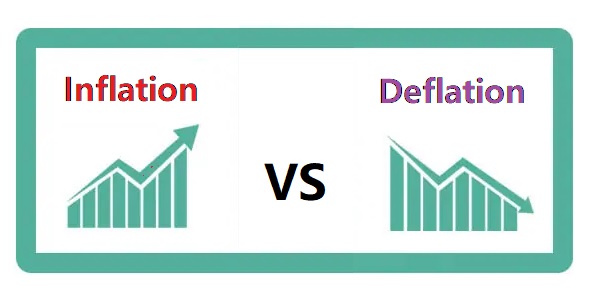
Inflation and deflation are two economic concepts that describe changes in the general price level of goods and services in an economy over time.
Inflation:
Definition:
Inflation is the sustained increase in the general price level of goods and services in an economy over a period of time. It means that, on average, prices are rising, and the purchasing power of a unit of currency (e.g., the dollar or euro) is decreasing.
Causes:
Inflation can be caused by various factors, including increased demand for goods and services, rising production costs, expansionary monetary policies (e.g., printing more money), and external factors like changes in international commodity prices or exchange rates.
Effects:
Inflation can have both positive and negative effects. Moderate inflation is generally considered normal in a growing economy and can stimulate spending and investment. However, high or hyperinflation can erode savings, create uncertainty, and lead to economic instability.
Deflation:
Definition:
Deflation is the sustained decrease in the general price level of goods and services in an economy over time. In a deflationary environment, prices are falling, and the purchasing power of a unit of currency increases.
Causes:
Deflation can be caused by factors such as a decrease in consumer spending, a drop in business investment, declining demand for goods and services, or a decrease in the money supply. It can also be a result of economic crises or financial panics.
Effects:
While falling prices may seem beneficial to consumers at first, deflation can have negative consequences. It can discourage spending because consumers anticipate even lower prices in the future, leading to reduced economic activity. It can also increase the burden of debt since the real value of debt increases in a deflationary environment.
It's worth noting that both inflation and deflation, when extreme, can be harmful to an economy. Central banks and governments often aim to maintain price stability by targeting a moderate level of inflation (usually around 2% in many developed countries) through monetary policy. They may use tools like interest rate adjustments and open market operations to control inflation or stimulate economic growth in the face of deflationary pressures. Balancing these two forces is essential for a healthy and stable economy.